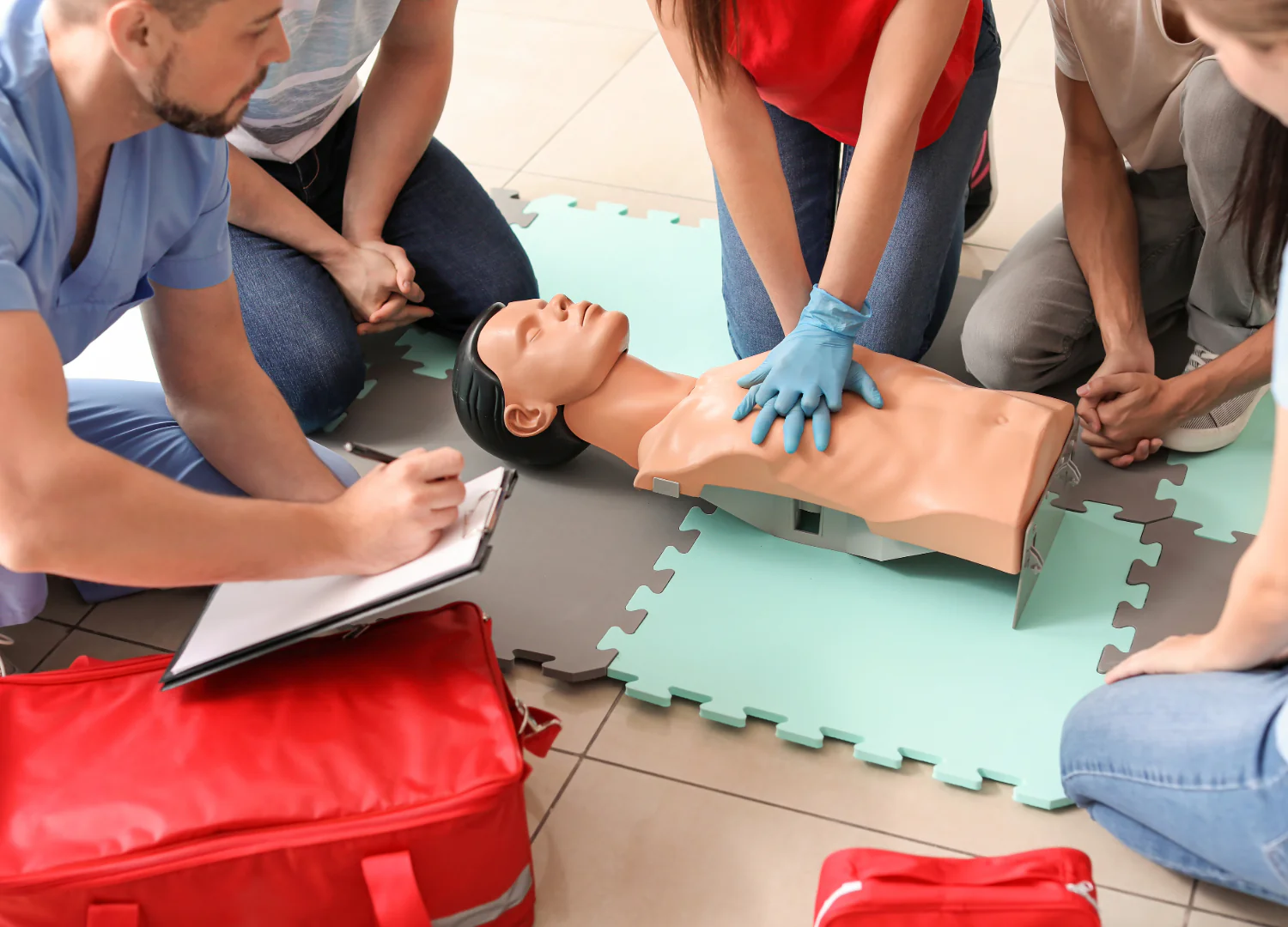Introduction
When emergencies strike—whether it’s a car accident, a burn in the kitchen, or a sudden collapse in public—first aid becomes the critical bridge between the incident and professional medical care. But what exactly is first aid?
First aid is the immediate assistance given to an injured or ill person before the arrival of medical professionals. The purpose is not to offer complete medical treatment, but rather to stabilize the condition and give the individual the best chance of recovery.
Understanding what are three aims of first aid is fundamental to providing effective help. These three aims, also known as the “Three Ps,” are:
- Preserve Life
- Prevent Further Harm
- Promote Recovery
These principles serve as a guide for every action a first aider takes in any situation—whether minor or life-threatening.
Preserve Life
The most urgent and vital aim of first aid is to preserve life. This means doing whatever is necessary to keep the person alive until professional help arrives. It can involve something as simple as calling emergency services or as complex as performing CPR.
Key Life-Preserving Techniques:
Here are several core practices used to preserve life:
- DRABC Assessment
This is a common protocol used to assess a casualty’s condition: StepDescriptionDDanger – Ensure the area is safe for you and the casualtyRResponse – Check if the casualty is consciousAAirway – Ensure the airway is openBBreathing – Look, listen, and feel for breathingCCirculation – Check for signs of circulation or severe bleeding - Cardiopulmonary Resuscitation (CPR)
If a casualty is unresponsive and not breathing, CPR keeps oxygenated blood flowing to vital organs until advanced care is available. - Use of AED (Automated External Defibrillator)
An AED can be used during cardiac arrest to help restore a normal heart rhythm. - Managing Major Bleeding
Severe bleeding can lead to death quickly. Applying direct pressure and elevating the limb are vital actions that can preserve life.
The goal in this first aim is simple: keep the person alive, breathing, and as stable as possible while waiting for paramedics or getting them to a hospital.
Prevent Further Harm
Once life is preserved, the next priority is to prevent the casualty’s condition from worsening. This includes protecting them from further injury or complications and taking steps to minimize the damage already done.
Common Actions to Prevent Harm Include:
- Stop Bleeding – Apply pressure, use clean bandages, or elevate limbs to reduce blood flow.
- Immobilize Injuries – Broken bones or suspected spinal injuries should be kept still.
- Remove the Danger – If someone is near fire, traffic, or other hazards, move them only if it’s safe.
- Prevent Shock – Lay the person down, elevate their legs, and keep them warm if they show signs of shock.
- Protect Wounds – Use sterile dressings to reduce the risk of infection.
- Monitor Vital Signs – Keep an eye on their breathing and consciousness level.
By applying these techniques, you reduce the chance that the situation worsens before professionals can take over.
Promote Recovery
The third aim focuses on helping the person recover as fully and quickly as possible. It’s about providing comfort, continuing care, and supporting both physical and emotional healing.
Ways to Promote Recovery:
- Offer Reassurance – A calm and supportive presence can reduce fear and anxiety.
- Correct Positioning – For example, placing someone in the recovery position if they are unconscious but breathing.
- Keep Them Comfortable – Use blankets, cushions, or adjust their position to help ease discomfort.
- Encourage Compliance – If a person needs to rest, drink fluids, or stay still, guide them patiently.
- Accurate Information Transfer – Tell emergency responders what happened and what care was provided.
Example Table: Positioning for Recovery
| Situation | Best Position |
|---|---|
| Unconscious but breathing | Recovery position (on the side) |
| Shock | Lying down with legs elevated |
| Breathing difficulty | Sitting upright |
Promoting recovery isn’t always about medical intervention—it’s also about empathy, communication, and care.
Importance of First Aid Training
Knowing what are three aims of first aid is just the beginning. Proper first aid training empowers people to respond quickly and correctly during emergencies. It can make the difference between life and death, recovery or long-term disability.
Benefits of First Aid Knowledge:
- Builds confidence to take action
- Helps save lives in the critical first minutes
- Reduces the severity of injuries
- Encourages a safer workplace or home environment
- Fulfills legal and professional obligations in many fields
Workplaces, schools, and communities all benefit when more people are trained in first aid.
Conclusion
In summary, understanding what are three aims of first aid helps every individual act with clarity and purpose during emergencies. Whether it’s preserving life through CPR, preventing further injury by controlling bleeding, or promoting recovery through comfort and monitoring, these aims guide effective and compassionate care.
Everyone—regardless of background—can learn first aid. And with just a bit of knowledge and confidence, you can become the first line of defense in a life-threatening situation.
If you haven’t already, consider taking a certified first aid course. It’s one of the most valuable skills you can ever learn.
Other Articles
Understanding the 3822 Blossom Terrace Erie PA Water Hook Up Diagram: A Complete Homeowner’s Guide
How Do Game Conservation Laws Affect Hunters? | Complete Guide for Ethical Hunting
How to Scale a Crypto Exchange Business: The Complete Growth Blueprint
Can I Trade In a Financed Car? Complete Guide to Trading in a Car with a Loan








